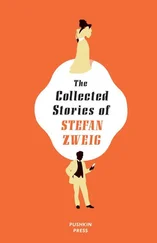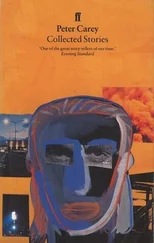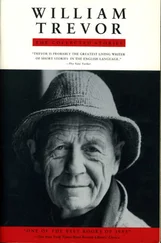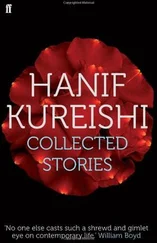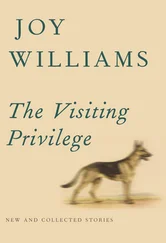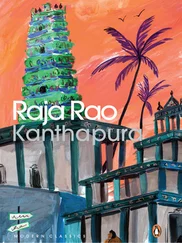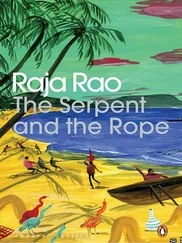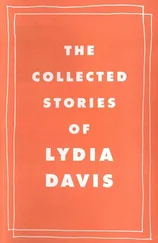Raja Rao - Collected Stories
Здесь есть возможность читать онлайн «Raja Rao - Collected Stories» весь текст электронной книги совершенно бесплатно (целиком полную версию без сокращений). В некоторых случаях можно слушать аудио, скачать через торрент в формате fb2 и присутствует краткое содержание. Год выпуска: 2014, Издательство: Penguin, Жанр: Классическая проза, на английском языке. Описание произведения, (предисловие) а так же отзывы посетителей доступны на портале библиотеки ЛибКат.
- Название:Collected Stories
- Автор:
- Издательство:Penguin
- Жанр:
- Год:2014
- ISBN:нет данных
- Рейтинг книги:5 / 5. Голосов: 1
-
Избранное:Добавить в избранное
- Отзывы:
-
Ваша оценка:
- 100
- 1
- 2
- 3
- 4
- 5
Collected Stories: краткое содержание, описание и аннотация
Предлагаем к чтению аннотацию, описание, краткое содержание или предисловие (зависит от того, что написал сам автор книги «Collected Stories»). Если вы не нашли необходимую информацию о книге — напишите в комментариях, мы постараемся отыскать её.
Collected Stories — читать онлайн бесплатно полную книгу (весь текст) целиком
Ниже представлен текст книги, разбитый по страницам. Система сохранения места последней прочитанной страницы, позволяет с удобством читать онлайн бесплатно книгу «Collected Stories», без необходимости каждый раз заново искать на чём Вы остановились. Поставьте закладку, и сможете в любой момент перейти на страницу, на которой закончили чтение.
Интервал:
Закладка:
In the spirit of the Upanishads, the novel attempts to inquire into the nature of the Self and the attainment of Self-Knowledge with the help of the Guru. The protagonist, Ramaswamy, is an aspirant in this spiritual quest. In the process, he has to tear through the veil of ignorance ( avidya ). He explains the quest with the help of an analogy— that of the serpent and the rope — that Sankara himself uses.
The world is either unreal or real — the serpent or the rope. There is no in-between-the-two — and all that’s in-between is poetry, is sainthood. . For wheresoever you go, you see only with the serpent’s eyes. Whether you call it duality or modified duality. . you look at the rope from the posture of the serpent, you feel you are the serpent — you are the rope. But in true fact, with whatever eyes you see there is no serpent, there never was a serpent. . One— the Guru — brings you the lantern; the road is seen, the long, white road, going with the statutory stars. ‘It’s only the rope.’ He shows it to you. (1960: 333)
A powerful recursive device used throughout the novel is the dash (—) to suggest the to-and-fro movement of a thought, its amplitude and density. And this passage is a good example of it. The dash is used to indicate a break or an interruption in the thought. In between dashes, a thought is often insinuated or slipped under the breath, as it were.
Before Ramaswamy is on the ‘long, white road’ to Travancore that would lead him to the Guru, his life takes many twists and turns. His marriage to Madeleine, whom he meets while a student in France, breaks up, especially after Savithri comes into his life. Savithri is the eldest daughter of Raja Raghubir Singh of Surajpur, and Ramaswamy meets her on a visit to India. Savithri is the woman he has been waiting for; but she is soon to be married to his friend Pratap.
Ramaswamy’s relationship with Savithri is reinforced by the myth of the princess Savithri as told in ‘The Book of the Forest’ (the Vanaparvan ) of the Mahabharata. Savithri is a pativrata , a woman who observes the vow of devotion to her husband. Indian tradition ascribes extraordinary powers to a chaste wife. Her marriage to Satyavan is doomed from the start. Her husband is to die within a year. Yama, the god of death, arrives at the end of the year to claim Satyavan. Refusing to give up on her husband, Savithri takes on Yama and wins him over by strictly observing her dharma. Through her love and devotion, Savithri rescues Satyavan from Yama himself. In the novel, Savithri likewise rescues Ramaswamy from inertia and puts him on the spiritual path. Alone now, Ramaswamy calls out: ‘Not a God but a Guru is what I need’ (1960: 400). And the Guru appears in a vision: ‘He called me, and said, “It is so long, so long, my son. I have awaited you. Come, we go. .” To such a Truth was I taken, and became its servant, I kissed the perfume of its Holy Feet, and called myself a disciple’ (1960: 401).
If Kannada is the prototype for English in Kanthapura , it is Sanskrit in The Serpent and the Rope. Sanskrit is the obvious choice, as the novel has a strong metaphysical bias. It was in Sanskrit that the philosophical speculations of the Indians found their profoundest expression. Rao’s Sanskritic English is not unlike Milton’s Latinate English in Paradise Lost. The intent is the same: to assimilate into English the qualities and features of a prestigious language the writer admires most. As opposed to the Prakrits, the vernaculars, Sanskrit was the ‘perfected’ language. The Sanskritization of English should be seen as part of a wider socio — cultural phenomenon that has historically characterized Indian civilization. Louis Dumont and David Pocock interpret Sanskritization as the ‘acceptance of a more distinguished or prestigious way of saying the same things’. 15Quotations in the original, together with English translations from the classical Sanskrit poets — Kalidasa (fourth — fifth century) and Bhavabhuti (eighth century) — and from the devotional hymns of Sankara and Mira (sixteenth century), are skilfully woven into the story and function as a parallel text. Ramaswamy relapses into Sanskrit to tell Madeleine as delicately as possible what he is unable to tell her openly — his feeling of despair as she increasingly withdraws into herself. He finds a parallel in Bhavabhuti’s Uttararāmacarita (‘The Later Story of Rama’), to which he draws her attention. The occasion has all the solemnity of a ritual, and it represents his farewell to her.
ekaḥ saṃprati nāśitapriyatamastāmadye rāmaḥ kathaṃ |
pāpaḥ pañcavaṭīṃ vilokayatu vā gacchatvasaṃbhāvya vā ||
(II. 28) (1960: 326)
Alone, now, after being the cause of the loss of his dear [wife], how should Rama, sinful as he is, visit that very same Pañcavaṭī, or how pass on regardless of it? 16
The philosophical bias is even more pronounced in The Cat and Shakespeare . Rao exploits the Advaita Vedantic idea of the world being a play ( lila ) of the Absolute, and the result is an exhilarating comedy. However, it is the Visishta Advaita (‘qualified monism’) Vedanta of Ramanuja (eleventh — twelfth century) that informs the novel. Ramanuja emphasizes the way of devotion ( bhakti-marga ) to God in which the seeker surrenders himself to His grace to achieve salvation. This is seen in the two schools that developed after Ramanuja: the ‘Northern School’ ( Vadagalai ) and the ‘Southern School’ ( Tengalai ). According to the first, salvation is achieved by following the ‘analogy of the monkey’ ( marka t a-nyaya ). Just as the young one of a monkey feels safe when it holds on to its mother’s body, so does God save those who make an effort to reach Him. According to the second, salvation is achieved by following the ‘analogy of the cat’ ( marjara-nyaya ). Just as a kitten is carried by a cat in its teeth, so does God save those who do not even make an effort to reach Him.
It is Govindan Nair, the protagonist Ramakrishna Pai’s neighbour, who best exemplifies the ‘analogy of the cat’ in the novel. Both Nair and Pai are civil servants in the former princely state of Travancore in south-western India in the early 1940s. The Second World War is on.
The kitten is being carried by the cat. We would all be kittens carried by the cat. Some, who are lucky. . will one day know it. . Ah, the kitten when its neck is held by its mother, does it know anything else but the joy of being held by its mother? You see the elongated thin hairy thing dangling, and you think, poor kid, it must suffer to be so held. But I say the kitten is the safest thing in the world, the kitten held in the mouth of the mother cat. Could one have been born without a mother?. . But a mother — I tell you, without Mother the world is not. So allow her to fondle you and to hold you. 17
As a clerk in Ration Office No. 66 in Trivandrum, Nair earns forty-five rupees a month. He has little or no prospect of becoming rich. His son, Shridhar, dies from pneumonia, and he has a brush with the law that lands him in prison. But none of this affects Nair. He remains his usual optimistic self, with a firm belief in the mother cat. His faith saves him in the end.
Pai, as a clerk in the Revenue Board, dreams of building a three-storeyed house. A Saraswat Brahmin, he enters into a relationship with a Nair woman, Shantha, a schoolteacher. This is a social custom known as sambandham (‘relationship’) that was once prevalent in Kerala among the Nairs. Pai’s wife, Saroja, has no say in the matter. She removes herself to her ancestral home, Kartikura House, in Alwaye with her son, Vithal. ‘What is woman, you may ask. Well, woman is Shantha,’ says Pai, and goes on, ‘Shantha also loves. . she is so exquisite in her love play. She is shy like a peahen. Her giving is complete’ (1965: 20–21). But the ‘dearest thing’ in Pai’s life is his five-year-old daughter, Usha. Both Shantha and Usha embody the feminine principle as does the Mother Cat (a symbol for the compassionate Guru). They are the instruments of divine grace ( kripa ). For, in the Kulacūḍāmaṇi Nigama (‘The Crest-Jewel of the Kula Doctrine’), a tantric text in praise of the goddess Shakti, we learn that even Shiva cannot become the supreme Lord unless Shakti unites with Him. And from Their union, all things arise. Shakti in fact says, ‘I manifest Myself as woman which is My own Self and the very essence of creation in order to know You, Shiva, the Guru, who are united with Me.’ 18
Читать дальшеИнтервал:
Закладка:
Похожие книги на «Collected Stories»
Представляем Вашему вниманию похожие книги на «Collected Stories» списком для выбора. Мы отобрали схожую по названию и смыслу литературу в надежде предоставить читателям больше вариантов отыскать новые, интересные, ещё непрочитанные произведения.
Обсуждение, отзывы о книге «Collected Stories» и просто собственные мнения читателей. Оставьте ваши комментарии, напишите, что Вы думаете о произведении, его смысле или главных героях. Укажите что конкретно понравилось, а что нет, и почему Вы так считаете.

